- What Are Gooseberries
- Varieties of Gooseberries
- Growing Gooseberries
- Common Diseases and Pests
- In Conclusion
- Identifying Diseases in Gooseberries
- 1. Powdery Mildew
- 2. Anthracnose
- 3. Leaf Spot
- 4. European Gooseberry Mildew
- 5. Gray Mold
- 6. Gooseberry Mosaic Virus
- 7. Aphid Infestation
- 8. Sawfly Larvae
- Common Diseases
- Powdery Mildew
- Leaf Spot
- Anthracnose
- Rust
- Gray Mold
- Signs and Symptoms
- 1. Foliage Damage
- 2. Fruit Damage
- 3. Plant Growth Abnormalities
- 4. Pest Presence
- 5. Disease Symptoms
- 6. Infestation Signs
- Controlling Diseases in Gooseberries
- 1. Powdery Mildew
- 2. Anthracnose
- 3. Gooseberry Canker
- 4. Botrytis Fruit Rot
- Preventive Measures
- 1. Site Selection
- 2. Proper Spacing
- 3. Soil Preparation
- 4. Watering
- 5. Mulching
- 6. Pruning
- 7. Cleanliness and Sanitation
- 8. Disease-resistant Varieties
- 9. Regular Inspections
- 10. Crop Rotation
- Treatments
- Chemical treatments
- Organic treatments
- Cultural practices
- Integrated Pest Management (IPM)
- Identifying Pests in Gooseberries
- Aphids
- Sawflies
- Gooseberry Fruitworms
- Spider Mites
- Gooseberry Sawfly
- Raspberry Beetle
- Common Pests
- Aphids
- Gooseberry Sawfly
- Gooseberry Moth
- Spider Mites
- Whiteflies
- Leaf Miners
- Scale Insects
- Slugs and Snails
- Birds
- Signs of Infestation
- 1. Leaves:
- 2. Fruits:
- 3. Branches and Stems:
- Question-answer:
- What are the common diseases that affect gooseberries?
- How can I identify powdery mildew on my gooseberry plants?
- What can I do to control powdery mildew on my gooseberries?
- How can I identify leaf spot disease on my gooseberry plants?
- What are some natural remedies for controlling leaf spot on gooseberries?
- Video: 11 Common Garden Pests – Garden Pest Identification
Gooseberries are delicious and nutritious fruits that are well-loved by many gardeners and fruit enthusiasts. However, like any other plant, gooseberries can be prone to diseases and pests that can hinder their growth and development. In order to ensure a bountiful harvest of these tasty berries, it is important to be able to identify and control the various diseases and pests that may affect them.
Identifying Diseases: One common disease that affects gooseberries is powdery mildew. This fungal infection appears as a powdery white coating on the leaves and stems of the plant. Another disease to look out for is gooseberry rust, which manifests as orange-yellow spots on the undersides of the leaves. Crown rot is another common disease that affects the roots of gooseberry plants, causing them to rot and die.
Controlling Diseases: To control powdery mildew, it is important to improve air circulation around the plants by pruning them and removing any fallen leaves or debris. Fungicides can also be used to treat an existing infection. Gooseberry rust can be controlled by removing infected leaves and using fungicides. Crown rot can be prevented by ensuring proper drainage and avoiding overwatering.
Identifying Pests: Gooseberries are also susceptible to pests such as aphids, fruit flies, and sawfly larvae. Aphids are tiny insects that cluster on the leaves and stems, sucking the sap from the plant. Fruit flies lay their eggs on the fruit, causing it to rot. Sawfly larvae are green caterpillar-like insects that eat the leaves of the gooseberry plant.
Controlling Pests: One method of controlling aphids is to spray the plants with a strong jet of water to dislodge them. Neem oil or insecticidal soap can also be used as a natural remedy. Fruit flies can be controlled by removing any fallen or rotting fruit from the vicinity of the gooseberry plants. Sawfly larvae can be handpicked or sprayed with insecticidal soap.
What Are Gooseberries
Gooseberries are small, round berries that belong to the Ribes genus and are native to Europe, Asia, and North America. They are closely related to currants and are often found growing in bush form. Gooseberries come in a variety of colors, including green, red, and yellow. They are rich in vitamins C and A, as well as fiber, making them a nutritious addition to any diet.
Gooseberries are known for their unique, tart flavor. Depending on the variety, their taste can range from sour to sweet-tart. They are often used in culinary applications, such as pies, jams, jellies, and sauces. Gooseberries can be enjoyed fresh or cooked, and their flavor pairs well with both sweet and savory dishes.
Varieties of Gooseberries
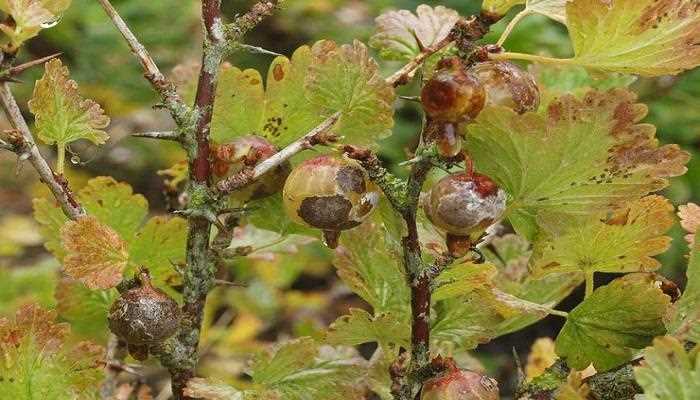
There are several varieties of gooseberries available, each with its own characteristics and uses. Some popular varieties include:
- Green Gooseberries: These gooseberries are picked when they are underripe and have a tangy, sour taste. They are commonly used in cooking and are ideal for making jams and pies.
- Red Gooseberries: These gooseberries are ripe and have a slightly sweeter flavor than green gooseberries. They are often enjoyed fresh or used in desserts.
- Yellow Gooseberries: These gooseberries are also ripe and have a sweet-tart flavor. They are commonly used in jams, jellies, and sauces.
Growing Gooseberries
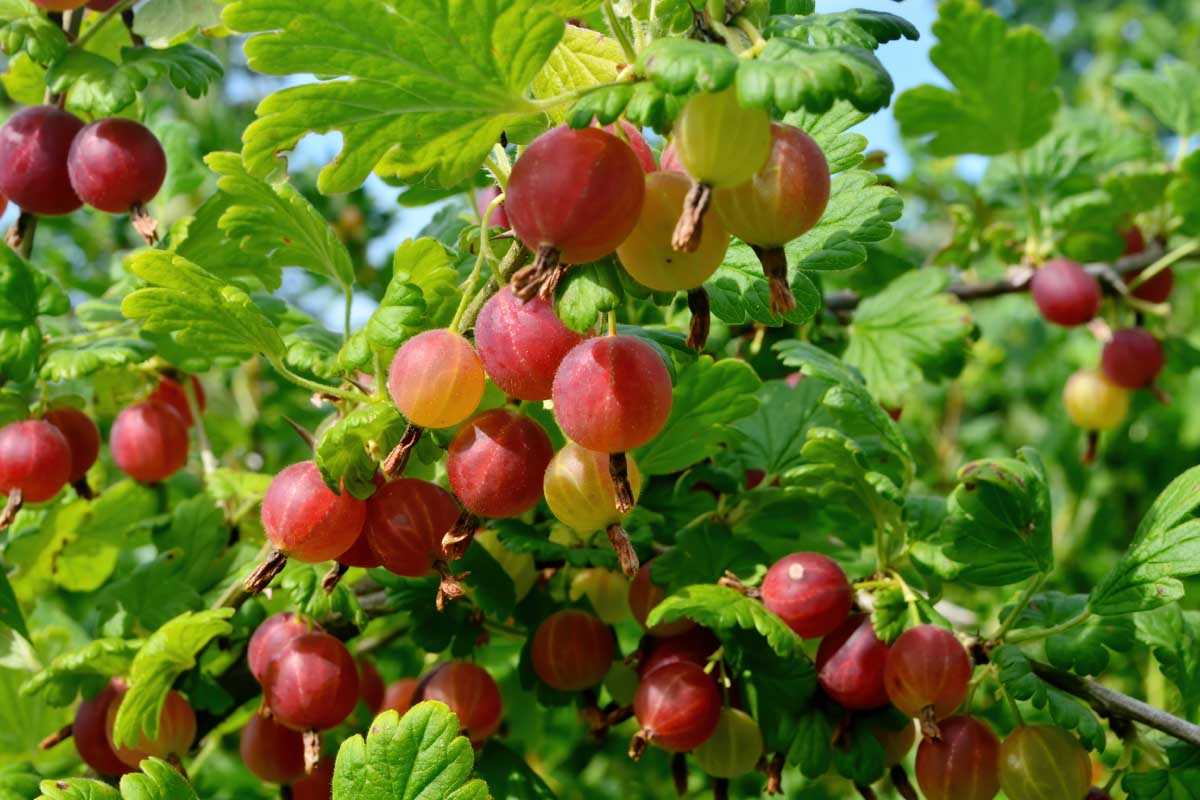
Gooseberries are relatively easy to grow and can be cultivated in a variety of climates. They prefer cool temperatures and thrive in well-draining soil. Gooseberry bushes should be planted in a sunny location and spaced about 3 to 4 feet apart.
When planting gooseberries, it is important to ensure they are in an area with good air circulation to prevent diseases. They should also be regularly pruned to maintain their shape and remove any dead or diseased branches.
Common Diseases and Pests
Like many fruits, gooseberries are susceptible to certain diseases and pests. Common diseases that affect gooseberries include powdery mildew, leaf spot, and anthracnose. These can be controlled through proper pruning, regular inspections, and the application of fungicides when necessary.
Gooseberries can also be targeted by pests such as aphids, sawflies, and spider mites. These can be controlled through the use of insecticides or by introducing natural predators, such as ladybugs, into the garden.
In Conclusion
Gooseberries are delicious and nutritious berries that can be enjoyed fresh or used in a variety of culinary applications. With proper care and attention to disease and pest control, gooseberries can be a rewarding addition to any garden.
Identifying Diseases in Gooseberries
Gooseberries are susceptible to various diseases, which can significantly affect the health and productivity of the plants. It is important to be able to identify these diseases early on to take appropriate measures for control and prevention. Here are some common gooseberry diseases and how to identify them:
1. Powdery Mildew
Powdery mildew is a fungal disease that appears as a white powdery coating on the leaves, stems, and fruit of gooseberry plants. The affected parts may also become distorted or stunted. Powdery mildew is more likely to occur in warm, humid conditions.
2. Anthracnose
Anthracnose is a fungal disease that causes dark, sunken lesions on the leaves, stems, and fruit of gooseberry plants. The lesions may have a pinkish or orange margin. In severe cases, the fruit may become deformed or rot. Anthracnose is more likely to occur in wet, cool conditions.
3. Leaf Spot
Leaf spot is a common fungal disease that causes small, dark spots on the leaves of gooseberry plants. The spots may merge and eventually turn yellow or brown. Severe infections can cause defoliation and weaken the plant.
4. European Gooseberry Mildew
European gooseberry mildew is a specific type of powdery mildew that affects gooseberries. It appears as a white powdery coating on the leaves, stems, and fruit. The affected parts may become distorted or stunted.
5. Gray Mold
Gray mold, also known as botrytis blight, is a fungal disease that causes a grayish-brown mold to develop on the fruit. The affected fruit may become soft and rot. Gray mold is more likely to occur in moist, humid conditions.
6. Gooseberry Mosaic Virus
Gooseberry mosaic virus is a viral disease that causes mottled yellow and green patterns on the leaves of gooseberry plants. The affected leaves may also be wrinkled or distorted. In severe cases, the plant may have reduced vigor and yield.
7. Aphid Infestation
Aphids are small, sap-sucking insects that can infest gooseberry plants and transmit viral diseases. They are usually found on the undersides of leaves and can cause stunted growth, distorted leaves, and the presence of sticky honeydew.
8. Sawfly Larvae
Sawfly larvae are caterpillar-like insects that can feed on the foliage of gooseberry plants. They eat the leaves, creating holes and skeletonized areas. Large infestations can defoliate the plants and weaken them.
If you notice any of these symptoms on your gooseberry plants, it is important to take action promptly. Proper identification of the disease or pest is the first step towards effective control and management. Consult a local horticulturist or agricultural extension service for accurate diagnosis and treatment recommendations.
Common Diseases
Gooseberries are susceptible to various diseases that can affect their growth and productivity. It is important to identify these common diseases early and take necessary measures to control and prevent their spread. Here are some of the most common diseases that can affect gooseberries:
Powdery Mildew
Powdery mildew is a fungal disease that can affect gooseberries. It appears as a white powdery growth on the leaves, stems, and fruit. Infected leaves may curl and turn yellow, leading to reduced vigor and fruit production. To control powdery mildew, remove and destroy infected plant parts, and ensure proper air circulation and sunlight exposure. Fungicides may also be used.
Leaf Spot
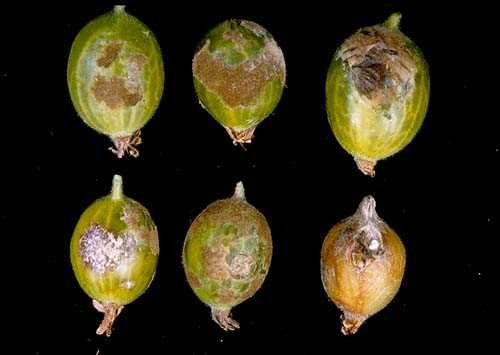
Leaf spot is another fungal disease that affects gooseberries. It appears as dark spots on the leaves and can cause defoliation and reduced fruit production. To control leaf spot, remove and destroy infected leaves, improve air circulation, and apply fungicides if necessary.
Anthracnose
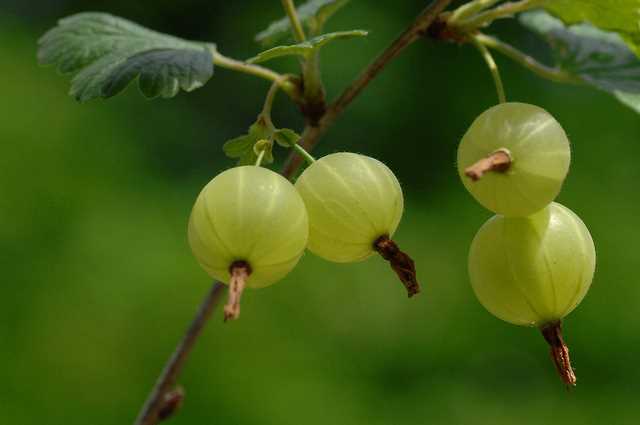
Anthracnose is a fungal disease that affects the fruits of gooseberries. It appears as small, sunken lesions on the berries, which can lead to rotting and spoilage. To control anthracnose, remove and destroy infected fruits, improve air circulation, and apply fungicides if necessary.
Rust
Rust is a fungal disease that can affect gooseberries. It appears as orange-yellow pustules on the leaves, stems, and fruit. Infected leaves may turn yellow and drop prematurely. To control rust, remove and destroy infected plant parts, improve air circulation, and apply fungicides if necessary.
Gray Mold
Gray mold, also known as botrytis blight, is a fungal disease that can affect gooseberries. It appears as gray-brown fuzzy growth on the leaves, stems, and fruits. Infected fruits may become soft and rot. To control gray mold, remove and destroy infected plant parts, improve air circulation, and apply fungicides if necessary.
| Disease | Symptoms | Control |
|---|---|---|
| Powdery Mildew | White powdery growth on leaves, stems, and fruit; yellowing and curling of leaves | Remove and destroy infected parts, improve air circulation, fungicides |
| Leaf Spot | Dark spots on leaves, defoliation, reduced fruit production | Remove and destroy infected leaves, improve air circulation, fungicides |
| Anthracnose | Small sunken lesions on berries, rotting and spoilage | Remove and destroy infected fruits, improve air circulation, fungicides |
| Rust | Orange-yellow pustules on leaves, stems, and fruit; yellowing and premature dropping of leaves | Remove and destroy infected parts, improve air circulation, fungicides |
| Gray Mold | Gray-brown fuzzy growth on leaves, stems, and fruit; softening and rotting of fruits | Remove and destroy infected parts, improve air circulation, fungicides |
Signs and Symptoms
Identifying signs and symptoms of diseases and pests on gooseberry plants is crucial in order to take appropriate measures for control. Here are some common signs and symptoms to look out for:
1. Foliage Damage
- Leaf Spots: Small, dark spots or discoloration on the leaves.
- Leaf Curl: Twisting or curling of leaves, often accompanied by stunted growth.
- Leaf Yellowing: Yellowing of the leaves, indicating nutrient deficiency or pest infestation.
2. Fruit Damage
- Rotting: Soft, decaying fruits with a foul smell.
- Holes or Bites: Presence of holes or bite marks on the fruits, indicating pest activity.
- Discoloration: Unusual discoloration of the fruits, such as black or brown patches.
3. Plant Growth Abnormalities
- Stunted Growth: Slow or inhibited growth of the plant, often accompanied by yellowing leaves.
- Wilting: Drooping or withering of the plant, indicating insufficient moisture or root damage.
- Gall Formation: Abnormal growths or swellings on the plant stems or roots.
4. Pest Presence
- Aphids: Tiny, pear-shaped insects that cluster on new growth.
- Currant Fruit Fly: Dark-colored flies that lay eggs in the fruit, causing maggots to infest the berries.
- Gooseberry Sawfly: Greenish-yellow larvae that skeletonize leaves and feed on fruits.
5. Disease Symptoms
- Anthracnose: Circular, brown lesions on fruits, stems, and leaves.
- Powdery Mildew: Powdery white patches on leaves and fruits.
- Rust: Yellow or orange pustules on the undersides of leaves.
6. Infestation Signs
- Webs: Sticky, silken webs spun by spider mites.
- Excrement: Presence of sticky or powdery excrement left by insects like aphids or scale insects.
- Eggs or Larvae: Clusters of eggs or small larvae on the undersides of leaves or on the fruits.
By regularly inspecting your gooseberry plants and being aware of these signs and symptoms, you can quickly identify and address any issues that may arise, ensuring healthy plant growth and bountiful harvests.
Controlling Diseases in Gooseberries
Gooseberries are susceptible to a variety of diseases that can affect their growth and productivity. It is important to identify and control these diseases to ensure healthy plants and a good harvest. Here are some common gooseberry diseases and recommended methods of control:
1. Powdery Mildew
Powdery mildew is a fungal disease that appears as a white or gray powdery coating on the leaves, stems, and berries of gooseberry plants. It can weaken the plant and reduce fruit production.
Control:
- Prune and thin out the plants to improve air circulation.
- Avoid overhead watering and irrigate at the base of the plants.
- Apply sulfur or a fungicide labeled for powdery mildew control according to the instructions.
2. Anthracnose
Anthracnose is a fungal disease that causes dark lesions on the leaves, branches, and berries of gooseberry plants. It can lead to defoliation and fruit rot.
Control:
- Remove and destroy infected plant debris, including fallen leaves and berries.
- Avoid overhead watering and irrigate at the base of the plants.
- Apply a fungicide labeled for anthracnose control according to the instructions.
3. Gooseberry Canker
Gooseberry canker is a fungal disease that causes sunken, cracked lesions on the branches and stems of gooseberry plants. These lesions can girdle the plant, leading to dieback and reduced fruit production.
Control:
- Prune and destroy the infected branches, making sure to make clean cuts below the canker.
- Apply a fungicide labeled for canker control to protect healthy plants.
4. Botrytis Fruit Rot
Botrytis fruit rot is a fungal disease that causes gray, fuzzy mold to develop on ripe gooseberries. It can quickly spread from one berry to another, leading to fruit rot and loss.
Control:
- Harvest ripe berries promptly to prevent the disease from spreading.
- Avoid overcrowding by thinning out the plants and improving air circulation.
- Discard infected berries and clean up fallen plant debris.
By implementing these disease control measures, you can protect your gooseberries from common diseases and ensure a healthy and productive crop.
Preventive Measures
By following some preventive measures, you can help keep your gooseberry plants healthy and free from diseases and pests. Here are some tips:
1. Site Selection
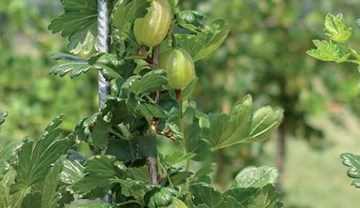
Choose a well-drained site with full sun to ensure optimal growth and fruit production. Avoid planting gooseberries in low-lying areas or areas with poor air circulation, as this can increase the risk of fungal diseases.
2. Proper Spacing
Ensure adequate spacing between gooseberry plants to promote air circulation and reduce the risk of diseases. Aim for a distance of 3-4 feet between plants and 6-8 feet between rows.
3. Soil Preparation
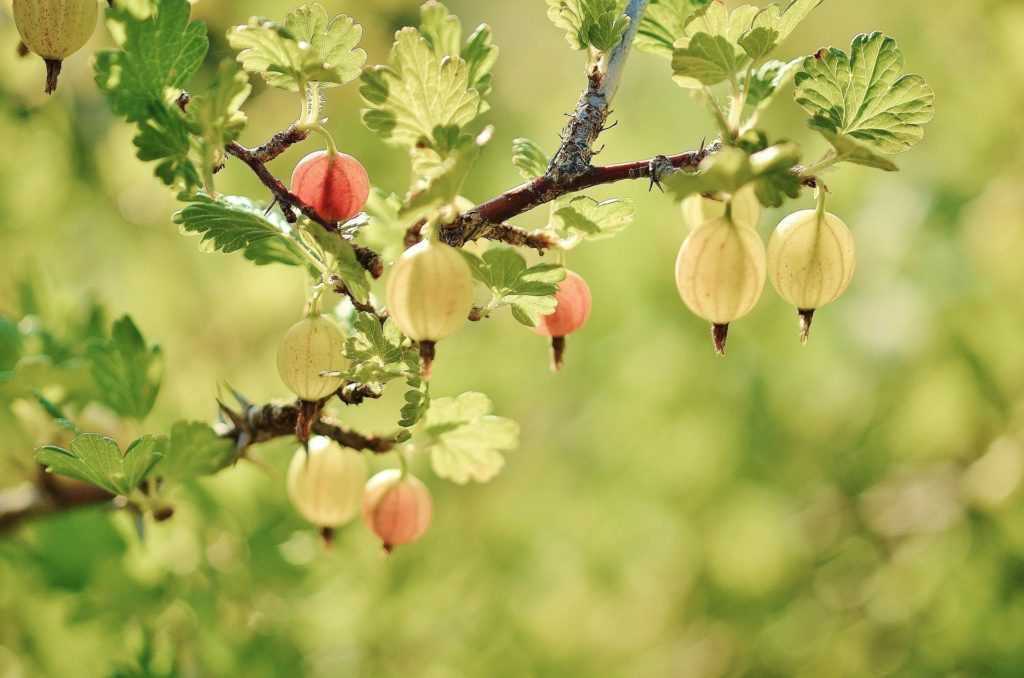
Prepare the soil before planting by adding organic matter such as compost or well-rotted manure. This will improve soil structure and fertility, ensuring healthy plant growth.
4. Watering
Provide consistent and adequate water to your gooseberry plants, especially during dry periods. Avoid overhead watering to minimize the risk of fungal diseases. Instead, use a drip irrigation system or water at the base of the plants.
5. Mulching
Apply a layer of organic mulch around the base of the plants to conserve moisture, suppress weed growth, and regulate soil temperature. This will create a favorable environment for gooseberries to thrive.
6. Pruning
Regularly prune your gooseberry plants to promote air circulation and remove any diseased or damaged branches. This will help prevent the spread of diseases and keep the plants healthy.
7. Cleanliness and Sanitation
Maintain good garden hygiene by removing fallen leaves, fruits, and debris from the planting area. This will prevent the buildup of diseases and pests.
8. Disease-resistant Varieties
Choose disease-resistant gooseberry varieties whenever possible. These varieties are bred to be less susceptible to common diseases and pests, reducing the need for chemical controls.
9. Regular Inspections
Monitor your gooseberry plants regularly for any signs of diseases or pests. Early detection can help prevent the spread of problems and allow for prompt treatment if necessary.
10. Crop Rotation
Practice crop rotation by avoiding planting gooseberries in the same location year after year. This can help break the life cycle of diseases and pests that may overwinter in the soil.
By implementing these preventive measures, you can maintain healthy and productive gooseberry plants throughout the growing season.
Treatments
Chemical treatments
When it comes to treating diseases and pests on gooseberries, there are several chemical options available:
- Fungicides: Fungicides can be used to control diseases such as powdery mildew, leaf spot, and rust. It is important to follow the instructions on the label and apply them at the recommended time and rate.
- Insecticides: Insecticides can be used to control pests like aphids, gooseberry sawflies, and spider mites. Make sure to choose an insecticide that specifically targets the pest you are dealing with and follow the instruction for proper application.
- Miticides: Miticides are used specifically for controlling mite infestations like spider mites. They work by interfering with the ability of mites to reproduce.
- Nematode control: If nematodes are causing problems in your gooseberry plants, there are nematode control products available that can help reduce their numbers.
Organic treatments
If you prefer organic methods of controlling diseases and pests on your gooseberries, there are several options available:
- Biological controls: Introducing beneficial insects or predatory mites can help to naturally control pest populations.
- Neem oil: Neem oil is an organic insecticide that can be effective against aphids, spider mites, and other pests. It can also help to prevent fungal diseases.
- Copper sprays: Copper sprays can be used as a fungicide to control diseases such as powdery mildew and leaf spot.
- Pruning: Regular pruning can improve air circulation and reduce the risk of fungal diseases.
- Good sanitation: Removing fallen leaves and other plant debris can help prevent the spread of diseases and pests.
Cultural practices
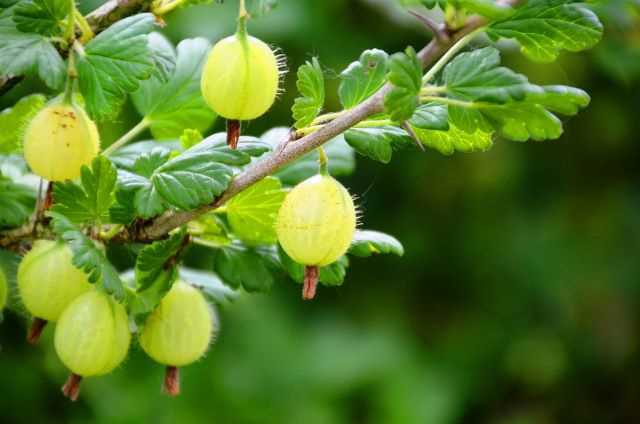
In addition to chemical and organic treatments, there are also cultural practices that can help prevent and control diseases and pests on gooseberries:
- Proper spacing: By providing adequate spacing between plants, you can improve air circulation and reduce the risk of fungal diseases.
- Regular watering: Proper watering can help to keep gooseberry plants healthy and less susceptible to diseases and pests.
- Weed control: Keeping the area around your gooseberry plants free from weeds can help reduce competition for nutrients and reduce the risk of diseases.
Integrated Pest Management (IPM)
Integrated Pest Management (IPM) is an approach that combines various methods, including cultural practices, biological controls, and targeted chemical treatments. With an IPM approach, the goal is to reduce the reliance on chemical treatments and minimize the impact on the environment.
When implementing an IPM program, it is important to monitor your gooseberry plants regularly for signs of diseases and pests. By catching problems early, you can take appropriate action before they become a major issue. Also, consider rotating your treatments to prevent the development of resistance in pests or diseases.
Identifying Pests in Gooseberries
Gooseberries are susceptible to a variety of pests that can cause significant damage to the plants if left untreated. It’s important to be able to identify these pests so that you can take appropriate measures to control them. Here are some common pests that affect gooseberries:
Aphids
- Aphids are small, soft-bodied insects that feed on the sap of gooseberry plants.
- They can be found on the undersides of leaves and stems, and can quickly multiply and infest the entire plant.
- Aphids cause leaves to curl, yellow, and drop prematurely.
- To control aphids, you can spray the plants with a strong jet of water to physically remove them, or use organic insecticides.
Sawflies
- Sawflies are small black or green caterpillar-like insects that feed on gooseberry leaves.
- They leave behind skeletonized leaves, with only the veins remaining.
- To control sawflies, you can handpick the larvae and destroy them, or use biological control methods such as introducing natural predators like parasitic wasps.
Gooseberry Fruitworms
- Gooseberry fruitworms are small green worms that feed on the fruit of gooseberry plants.
- They burrow into the fruit and cause it to become mushy and rotten.
- Inspect the fruit regularly and remove any infested ones to prevent the spread.
- You can also use insecticides labeled for fruitworm control.
Spider Mites
- Spider mites are tiny arachnids that feed on the undersides of gooseberry leaves.
- They cause stippling and bronzing of the leaves, and heavy infestations can result in defoliation.
- To control spider mites, you can spray the plants with water to dislodge them, or use insecticidal soap or horticultural oil.
Gooseberry Sawfly
- The gooseberry sawfly is a yellow, black-striped caterpillar-like insect that feeds on the foliage of gooseberry bushes.
- They skeletonize the leaves, leaving behind only the veins.
- Handpicking and destroying the larvae is an effective method of control.
Raspberry Beetle
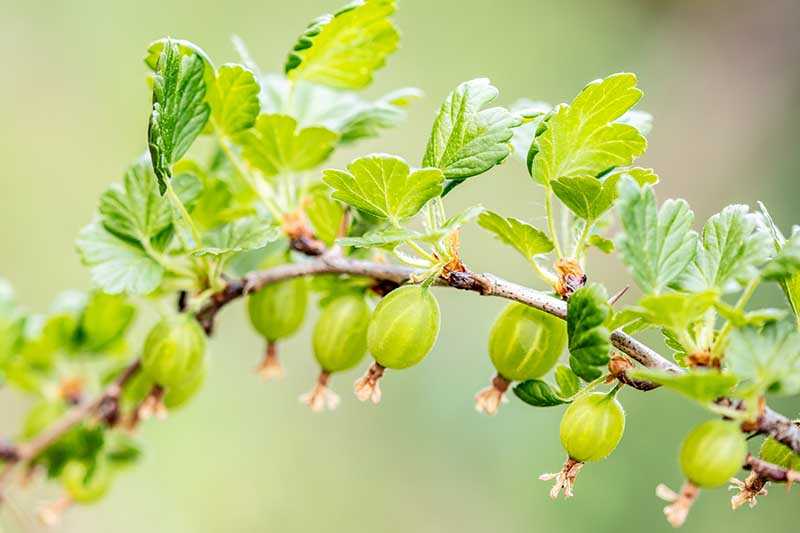
- Raspberry beetles are small, brown beetles that feed on gooseberry fruit.
- They leave behind small holes and tunnels in the fruit.
- Controlling raspberry beetle involves removing and destroying infested fruit, as well as using insecticides labeled for beetle control.
By being able to identify these common pests, you can take early action to control them and protect your gooseberry plants from damage. Regularly monitoring your plants and implementing appropriate pest control measures will help ensure a healthy and productive harvest.
Common Pests
Gooseberries are susceptible to a variety of pests. Here are some of the most common ones to look out for:
Aphids
Aphids are small insects that feed on the sap of gooseberry leaves and stems. They can quickly multiply and cause significant damage to the plant. Signs of an aphid infestation include curled and distorted leaves, sticky honeydew residue, and the presence of ants on the plant. To control aphids, you can spray the plants with a strong jet of water to dislodge them or use an insecticidal soap spray.
Gooseberry Sawfly
Gooseberry sawflies are small, caterpillar-like insects that feed on gooseberry leaves. They can quickly defoliate the plant if left unchecked. Signs of a gooseberry sawfly infestation include skeletonized leaves and the presence of green caterpillars on the plant. To control gooseberry sawflies, you can handpick the caterpillars or use an insecticide labeled for sawfly control.
Gooseberry Moth
The gooseberry moth is a small insect whose larvae feed on gooseberry fruits. Infested fruits will have small holes or may be completely hollowed out. To control gooseberry moths, you can remove and destroy infested fruits and use pheromone traps to capture the male moths.
Spider Mites
Spider mites are tiny pests that feed on the undersides of gooseberry leaves. They can cause yellowing and stippling of the leaves and can create fine webbing on the plant. To control spider mites, you can spray the plants with a strong jet of water or use an insecticidal soap spray.
Whiteflies
Whiteflies are small, winged insects that feed on the undersides of gooseberry leaves. They can cause yellowing, wilting, and stunted growth of the plant. Signs of a whitefly infestation include a cloud of small white insects flying up when the plant is disturbed. To control whiteflies, you can use yellow sticky traps or apply an insecticide labeled for whitefly control.
Leaf Miners
Leaf miners are small larvae that feed on the inside of gooseberry leaves, creating tunnels and causing damage to the foliage. Signs of a leaf miner infestation include discolored and distorted leaves. To control leaf miners, you can remove and destroy infested leaves or use an insecticide labeled for leaf miner control.
Scale Insects
Scale insects are small, immobile pests that attach themselves to the stems and leaves of gooseberry plants. They can cause yellowing, wilting, and a general decline in the health of the plant. Signs of a scale insect infestation include small, raised bumps on the plant. To control scale insects, you can scrape them off with a soft brush or use an insecticidal soap spray.
Slugs and Snails
Slugs and snails are common pests that can feed on gooseberry leaves and fruits, leaving behind slime trails. They are most active during damp weather conditions. To control slugs and snails, you can handpick them or set up traps using beer or yeast-based baits.
Birds
Birds can be a major pest for gooseberry plants, especially when the fruits start to ripen. They can peck and eat the ripe berries, causing significant losses. To deter birds, you can cover the plants with bird netting or use scare devices such as reflective tape or scarecrows.
Signs of Infestation
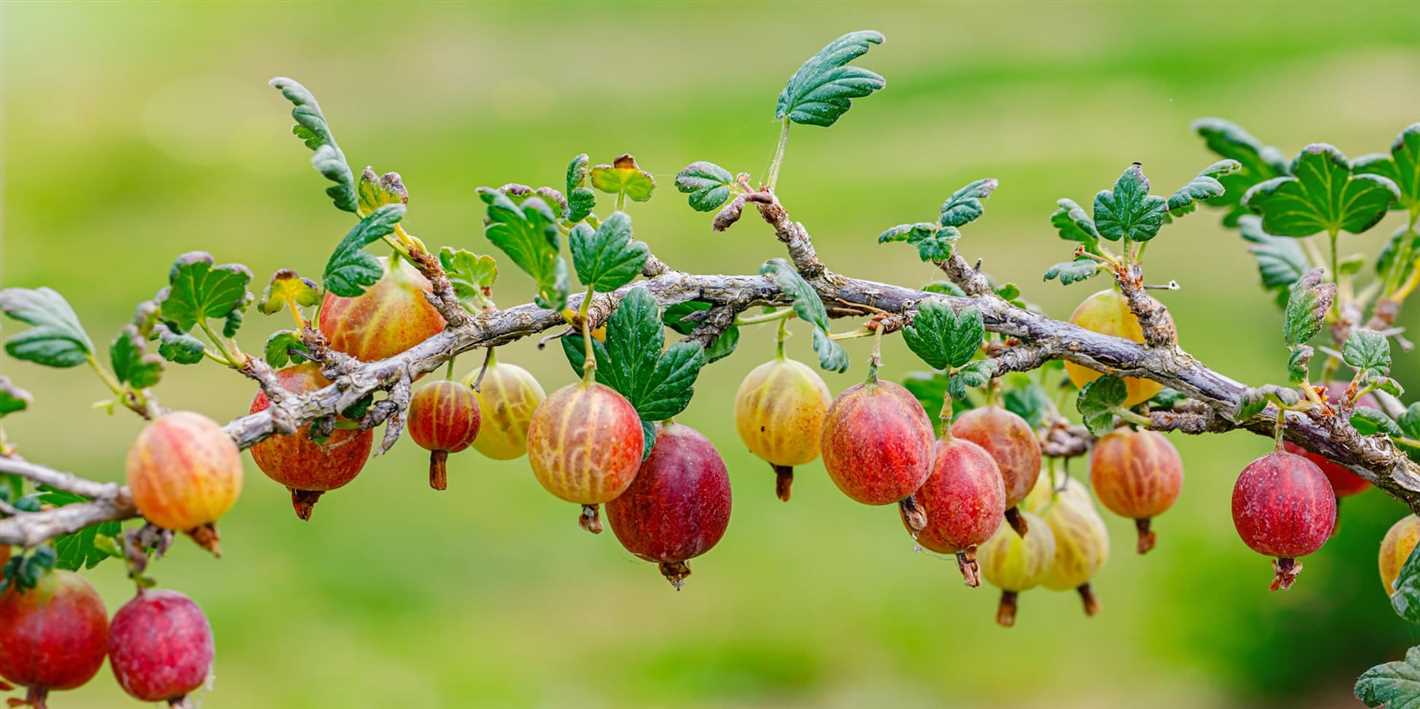
It can be disheartening to discover that your gooseberry plants are suffering from diseases or pests. To effectively identify and control these issues, it is important to know the signs of infestation to take appropriate action.
1. Leaves:
- Leaf curling or yellowing: If you notice your gooseberry leaves curling or turning yellow, it could be a sign of aphid infestation. Aphids feed on the sap of the leaves, causing them to curl or discolor.
- Spots or lesions: The presence of spots or lesions on the leaves may indicate the presence of fungal diseases such as leaf spot or powdery mildew. These diseases can weaken the plant and hinder its growth.
2. Fruits:
- Small holes or tunnels: If you find small holes or tunnels in your gooseberries, it could be a sign of fruit fly or sawfly larvae infestation. These pests feed on the fruits, causing damage and reducing yield.
- Rot or mold: Fungal diseases like gray mold or brown rot can cause the gooseberries to develop a fuzzy gray or brown coating. These diseases can quickly spread to other fruits if left untreated.
3. Branches and Stems:
- Cankers: Cankers are sunken, diseased areas on the branches or stems. They can be a sign of fungal or bacterial infection, which can weaken or even kill the plant if not addressed.
- Galls or swellings: The presence of abnormal growths or swellings on the branches or stems may indicate the presence of gall mites. These mites cause the plant tissues to deform, affecting its overall health.
It is important to regularly inspect your gooseberry plants for any signs of infestation. Early detection can help prevent the spread of diseases and minimize damage to the plants. If you notice any of these signs, it is recommended to take immediate action by implementing appropriate control methods or seeking professional advice.
Question-answer:
What are the common diseases that affect gooseberries?
Common diseases that affect gooseberries include powdery mildew, leaf spot, and canker.
How can I identify powdery mildew on my gooseberry plants?
Powdery mildew on gooseberry plants appears as a powdery white or gray substance on the leaves, stems, and fruit.
What can I do to control powdery mildew on my gooseberries?
To control powdery mildew on gooseberries, you can use fungicides or organic treatments like neem oil. It’s also important to prune and thin the plants to improve air circulation.
How can I identify leaf spot disease on my gooseberry plants?
Leaf spot disease on gooseberry plants causes small, dark spots on the leaves that may have a yellow halo around them.
What are some natural remedies for controlling leaf spot on gooseberries?
Some natural remedies for controlling leaf spot on gooseberries include removing and destroying affected leaves, improving air circulation, and applying a baking soda solution or a mixture of water and chamomile tea.







